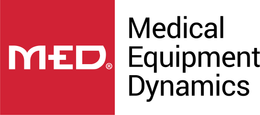The healthcare industry is facing unprecedented challenges as supply chain disruptions and tariffs on imported goods drive up the cost of new medical equipment. For many hospitals and clinics, this has created a significant barrier to accessing the technology needed to deliver quality care. However, these challenges have also highlighted the value of refurbished medical equipment as a cost-effective and reliable alternative. In this post, we’ll explore how the refurbished medical equipment market is projected to grow and why it’s becoming a vital resource for healthcare providers.
Why Refurbished Medical Equipment Is on the Rise
Refurbished medical equipment has long been a practical choice for healthcare providers looking to stretch their budgets without compromising on quality. Recent economic and logistical pressures have only strengthened its appeal:
- Affordability: Refurbished equipment typically costs 30-70% less than new equipment, making it an attractive option for facilities of all sizes.
- Reliable Performance: Advances in refurbishment processes ensure that used equipment meets stringent standards for safety and functionality, providing peace of mind to buyers.
- Availability: While supply chain issues have delayed the delivery of new devices, the refurbished market offers faster access to critical equipment.
Did you know? The global refurbished medical equipment market is projected to grow at an annual rate of 10% through 2030, according to MarketsandMarkets, driven by rising demand for cost-effective solutions.
The Role of Supply Chain Disruptions and Tariffs
New medical equipment has become increasingly difficult to procure, with tariffs and supply chain challenges driving up costs and extending lead times. These issues are particularly pronounced for devices requiring complex components or international sourcing:
- Rising Costs: Tariffs on imported medical devices and components have increased the price of new equipment by as much as 20% in some cases.
- Delayed Deliveries: Supply chain bottlenecks have extended wait times for new equipment, often forcing facilities to delay upgrades or repairs.
- Resource Constraints: Manufacturers are prioritizing high-demand items, leaving other devices in short supply.
These pressures have created an opportunity for the refurbished equipment industry to fill the gap, offering immediate and affordable alternatives without compromising on quality.
Environmental and Financial Benefits of Refurbished Equipment
Beyond cost and availability, refurbished medical equipment offers significant environmental and financial advantages:
- Sustainability: Refurbishing equipment extends its lifecycle, reducing electronic waste and the environmental impact of manufacturing new devices.
- Lower Total Cost of Ownership: Refurbished equipment often includes warranties and maintenance packages, providing long-term savings.
- Improved Budget Flexibility: By saving on equipment costs, facilities can allocate funds toward other critical areas, such as patient care or staff training.
Example: A community hospital in Texas reported saving over $500,000 in one year by opting for refurbished imaging equipment, allowing them to invest in additional staff and patient services.
Why the Refurbished Market Is Poised for Growth
As healthcare providers continue to seek solutions to economic and logistical challenges, the refurbished medical equipment market is expected to expand rapidly. Key drivers of this growth include:
- Advancements in Refurbishment Technology: Improved processes and testing protocols ensure that refurbished devices meet or exceed performance expectations.
- Increasing Acceptance: More hospitals and clinics are recognizing the value of refurbished equipment, leading to greater adoption across the industry.
- Broader Availability: The growth of specialized refurbishing companies and online marketplaces has made it easier to find high-quality equipment at competitive prices.
These trends suggest that refurbished equipment will play an increasingly important role in supporting healthcare providers as they navigate a challenging economic environment.
How to Make the Most of Refurbished Medical Equipment
For facilities considering refurbished equipment, here are some tips to ensure a successful purchase:
1. Choose a Trusted Supplier
Work with suppliers who have a proven track record of quality and reliability. Look for certifications and customer reviews to verify their expertise.
2. Verify Warranties and Support
Ensure that refurbished equipment comes with warranties and access to maintenance services for added peace of mind.
3. Plan for Long-Term Needs
Assess your facility’s current and future needs to select equipment that will provide the best return on investment over time.
4. Leverage Predictive Maintenance
Invest in maintenance programs that help extend the lifespan of refurbished equipment and prevent costly breakdowns.
Conclusion
As the healthcare industry faces rising costs and supply chain disruptions, refurbished medical equipment is emerging as a vital solution for hospitals and clinics. Offering affordability, reliability, and sustainability, the refurbished market is well-positioned to meet the growing demand for cost-effective alternatives. By choosing high-quality refurbished equipment, healthcare providers can reduce expenses, maintain operational efficiency, and continue to deliver exceptional patient care.
For more information on how refurbished medical equipment can benefit your facility, visit our homepage at www.med.equipment.

